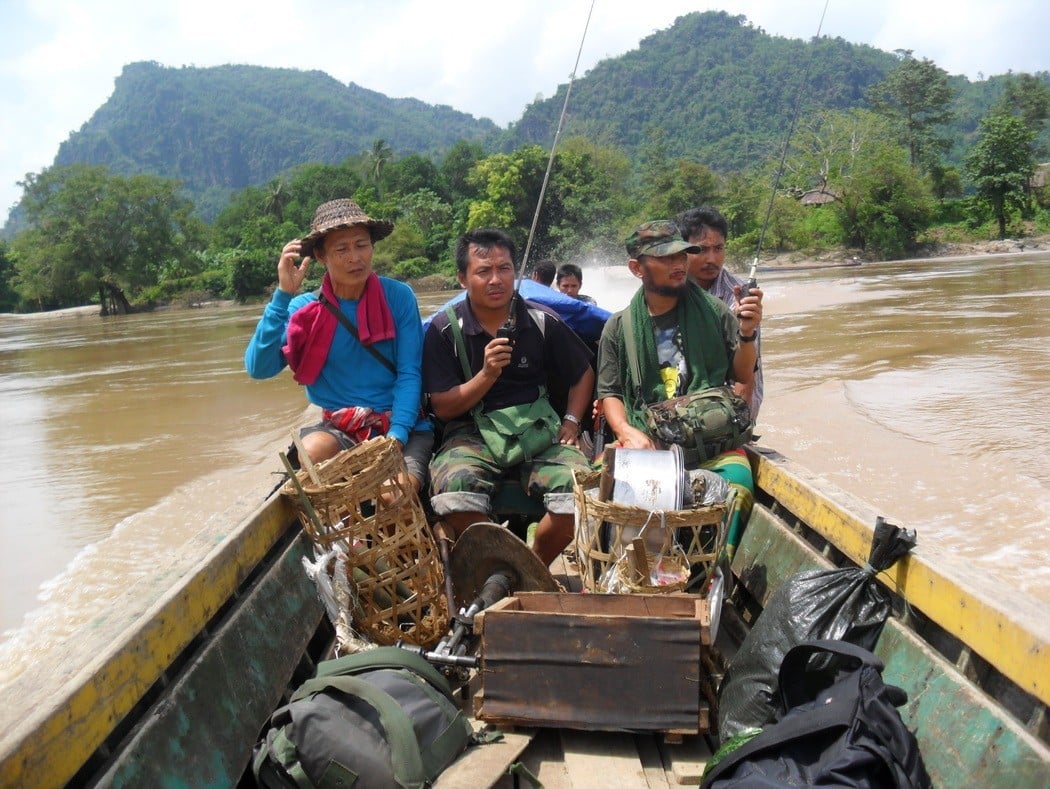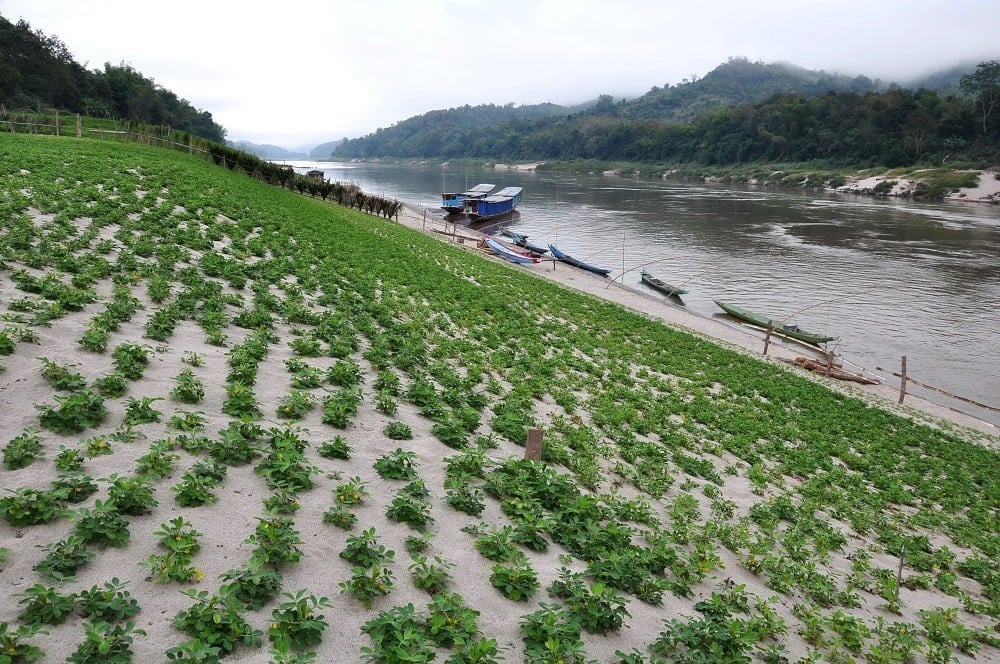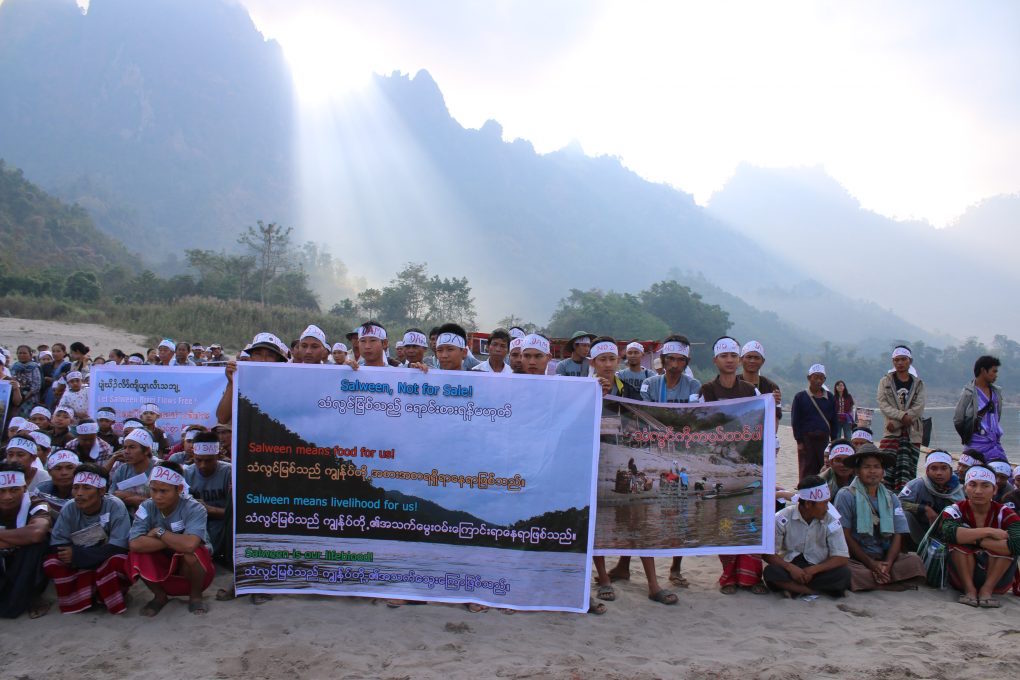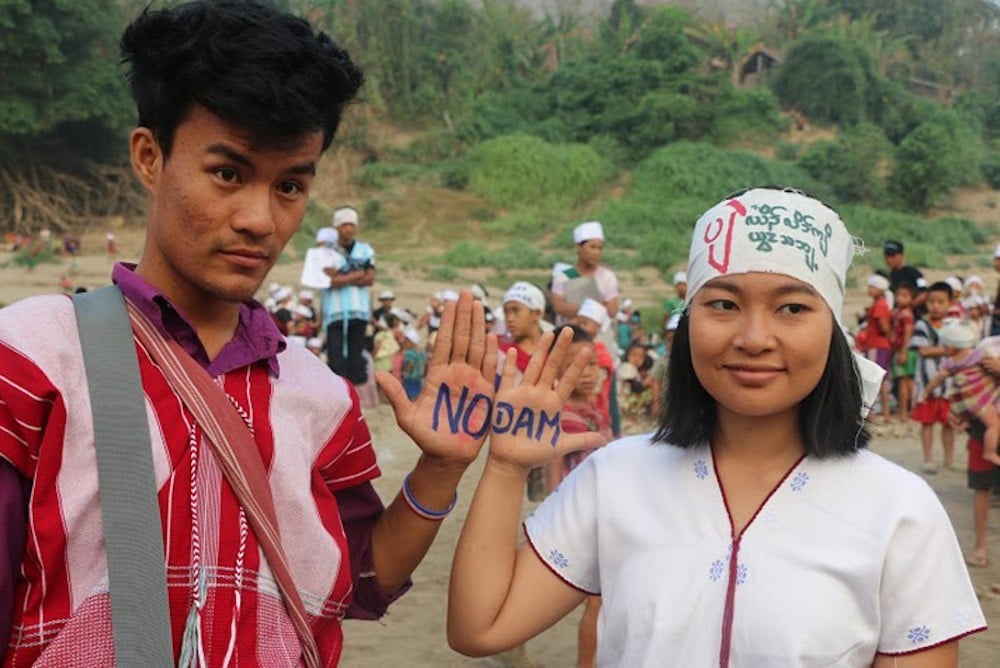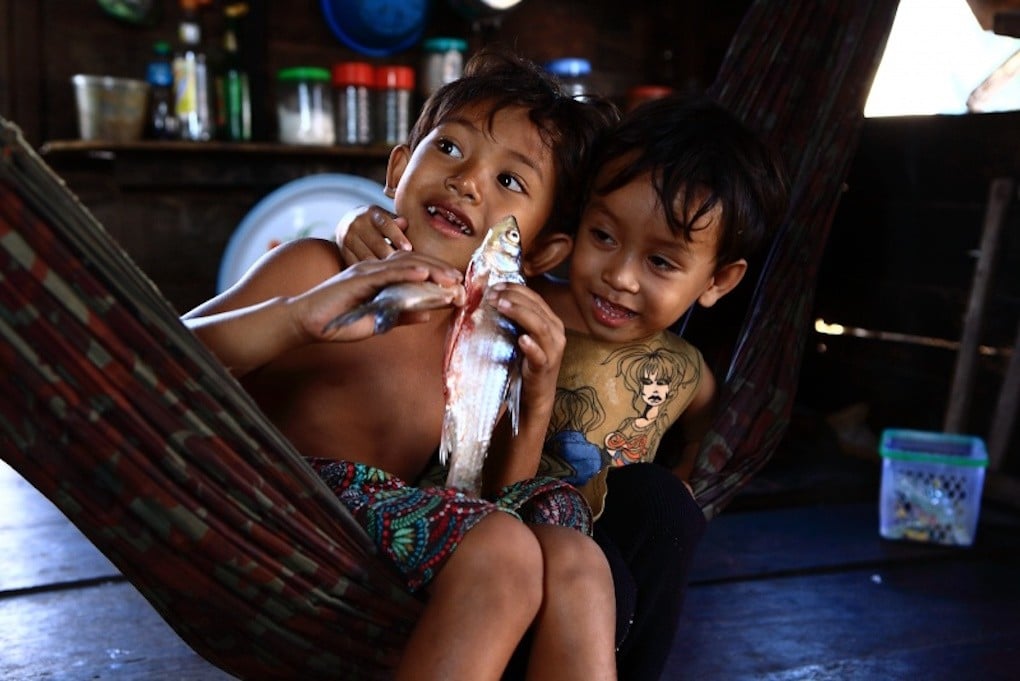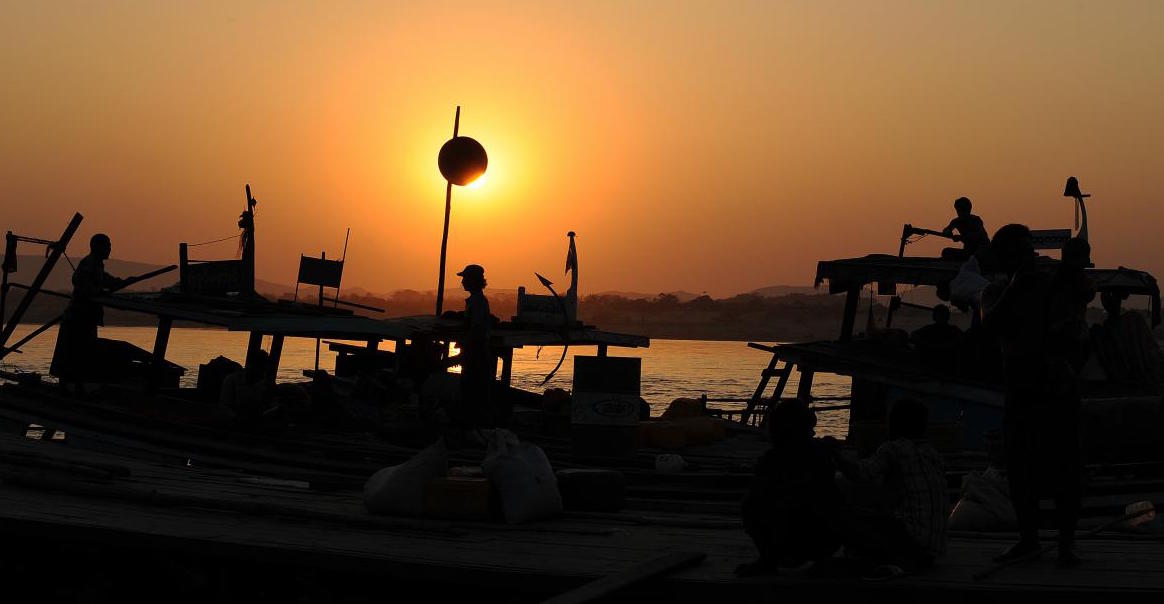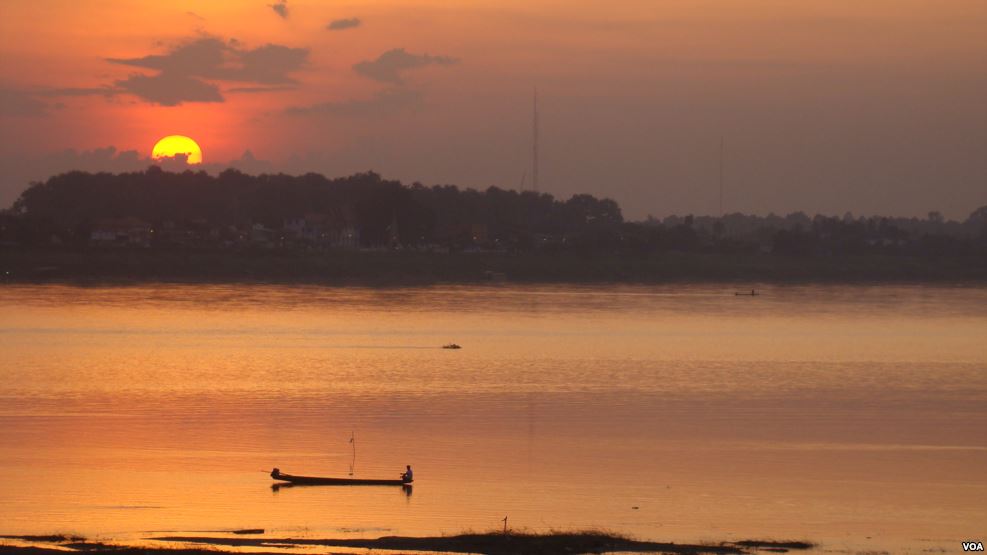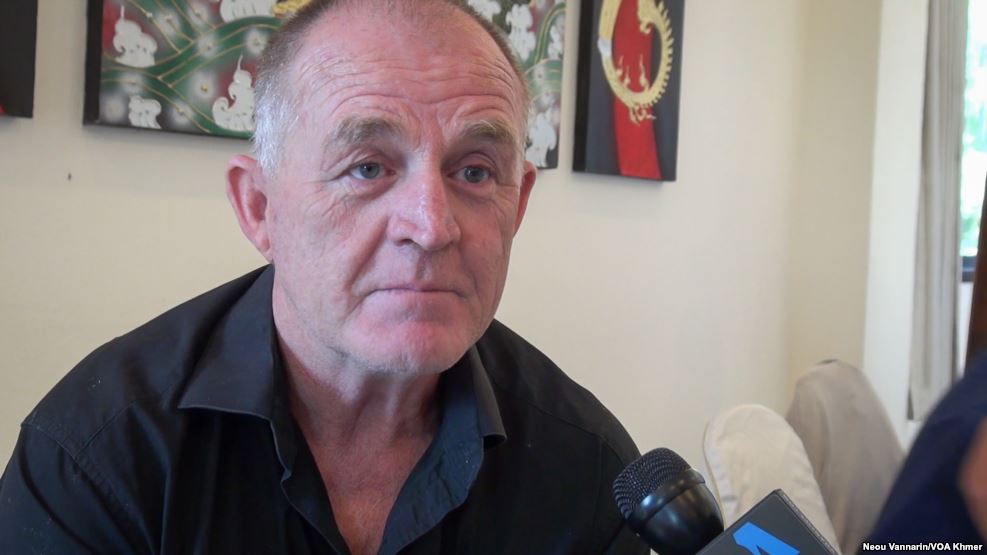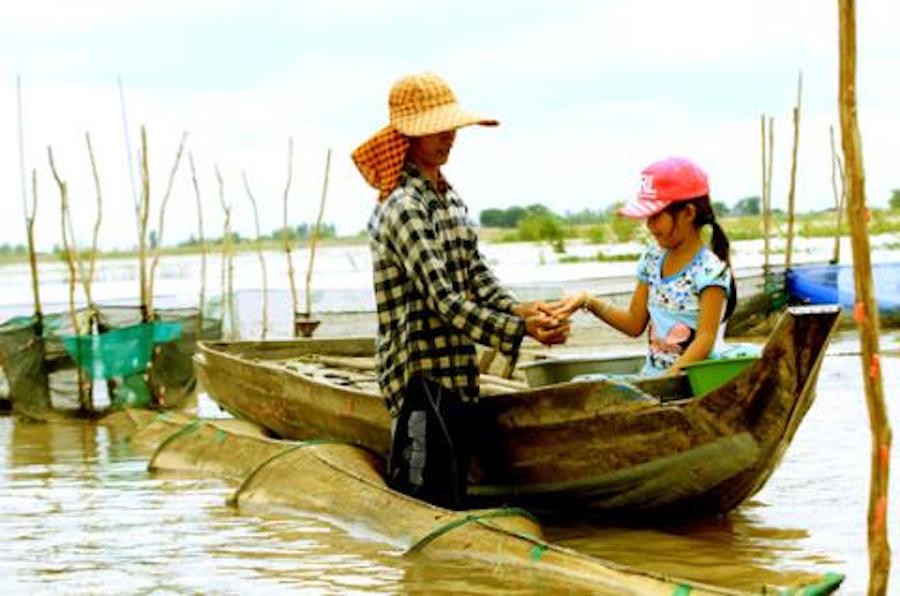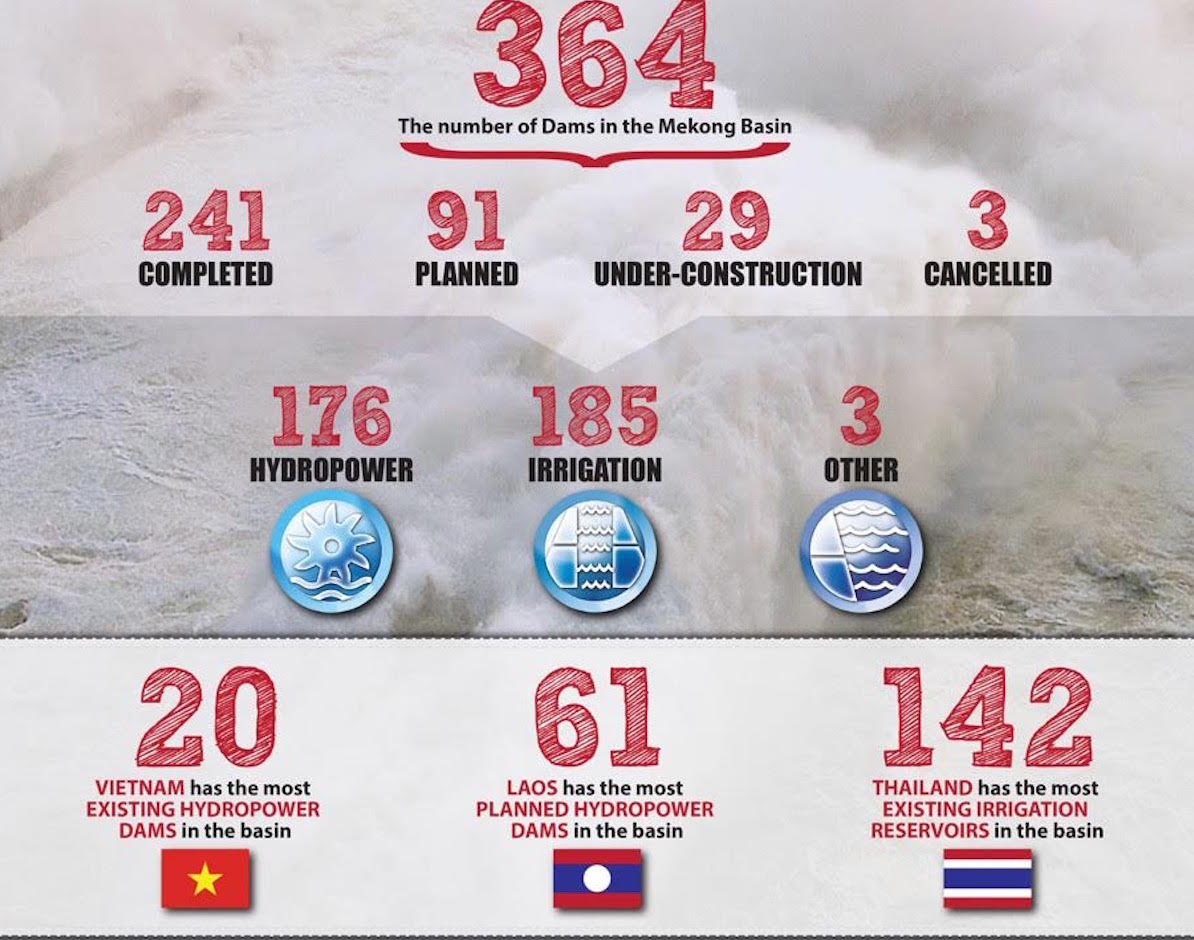In recent weeks, violent clashes in Kayin State have further disrupted Myanmar’s fragile peace process. Fighting between the Democratic Karen Buddhist Army (DKBA) and the government-sponsored Border Guard Force (BGF) in Mae Tha Waw areas of Hlaingbwe township, and more recently near Kawkareik township, has displaced over a thousand people. Entire families have fled their homes and are left stranded with limited access to food and assistance, producing nothing short of a humanitarian crisis. Across the border in Thailand, nearly 60,000 people remain in refugee camps, having fled ongoing conflict over the past two decades.
Tag: dams
Pak Beng – The Third Domino in The Series of Mainstream Dams on The Lower Mekong in Laos
On a visit to the Asian Institute of Technology AIT on 10-15-2012 to inspect the mockup of the Xayaburi Hydropower Dam, Mr. Viraphonh Viravong, Deputy Minister of Energy and Mines of Laos, the “brain” behind all development projects for hydropower dams in Laos asserted: “There is no question of Lao PDR not developing its hydropower potential. The only question is how to do it sustainably.”
Southeast Asia’s last major undammed river in crisis
From the snow-capped mountains of Tibet, the Salween rushes through steep gorges in Yunnan Province and flows through four of Myanmar’s ethnic states before emptying into the Andaman Sea.
With dams on hold upstream, Yunnan’s provincial chief Li Jiheng expressed support in 2016 for a national park to stimulate this region’s tourism in the upper Salween (the Nu River) which already attracts many visitors to the ‘Three Parallel Rivers’ World Heritage site. Although Li Jiheng was recently replaced by Chen Hao, it is hoped that the dams will remain suspended.
Activist group opposes all dams on Thanlwin River
The Thanlwin River Watch Alliance said it will oppose any dam project on the Thanlwin River at a forum held on Monday in Taunggyi Township, Shan State. The alliance is composed of residents of Shan, Kayah, Kayin and Mon states and monitors projects on the river, which flows through the four states. Ethnic minority representatives and members of civil society organisations attended the forum. The group also launched a nationwide signature campaign that day.
Report reveals a big dependence on freshwater fish for global food security
Freshwater fish play a surprisingly crucial role in feeding some of the world’s most vulnerable people, according to a study published Monday (Oct. 24) in the Proceedings of the National Academy of Sciences.
“It was eye-opening just how many people are deeply dependent on freshwater fisheries as sources of protein,” says Pete McIntyre, a lead co-author of the study and professor of zoology in the Center for Limnology at the University of Wisconsin–Madison. “Many people in poor nations do not get much animal protein to eat, and freshwater fish provide protein for the nutritional equivalent of 158 million people around the world.”
Meteorologist advises smaller alternatives to Myitsone megadam
The former director general of the meteorology and hydrology department has proposed an alternative solution to the problem of the stalled Myitsone hydropower dam. Instead of building one destructive and publically reviled mega dam, why not build four smaller hydropower projects instead, he suggested on Facebook yesterday night.
Research: Watershed or Powershed? Critical Hydropolitics, China and the ‘Lancang-Mekong Cooperation Framework’
Abstract: The countries sharing the Lancang-Mekong River are entering a new era of hydropolitics with a growing number of hydropower dams throughout the basin. Three ‘powersheds’, conceptualised as physical, institutional and political constructs that connect dams to major power markets in China, Thailand and Vietnam, are transforming the nature–society relations of the watershed. In the process, new conditions are produced within which the region’s hydropolitics unfold. This is epitomised by the ‘Lancang-Mekong Cooperation’ framework, a new initiative led by China that proposes programs on both economic and water resource development, and anticipates hydrodiplomacy via China’s dam-engineered control of the headwaters.
To Fix the Mekong, Just Look at the Evidence: Q&A With Dr. John Ward
Dr. John Ward is a research scientist at the Mekong Region Futures Institute specializing in integrated natural resource management. He spoke with VOA’s Neou Vannarin about the future of the Mekong, the effects of climate change, hydropower development, and the impact on the environment and people of the region.
Government urged to work with Cambodia on solutions to water resources
Scientists have urged the Vietnamese government to cooperate with Cambodia and draw up a plan to take full advantage of water resources.
From dams to basins: mapping across scales
t the end of June 2016, WLE Greater Mekong published a series of maps identifying dams on the Irrawaddy, Salween, Mekong, and Red rivers and their tributaries. The maps cover existing dams, dams under construction, planned dams, and cancelled dams; both irrigation dams and hydroelectric dams are mapped, as long as they have a reservoir size of at least 0.5 km2 and/or have an installed capacity of at least 15 megawatts (for hydroelectric dams).
The following is the first half of an interview that took place on 8 July 2016, between Dr Kim Geheb—the WLE Greater Mekong Regional Coordinator — and the editor of Thrive. It is being published here in anticipation of the Great Mekong Forum on Water, Food, and Energy.


